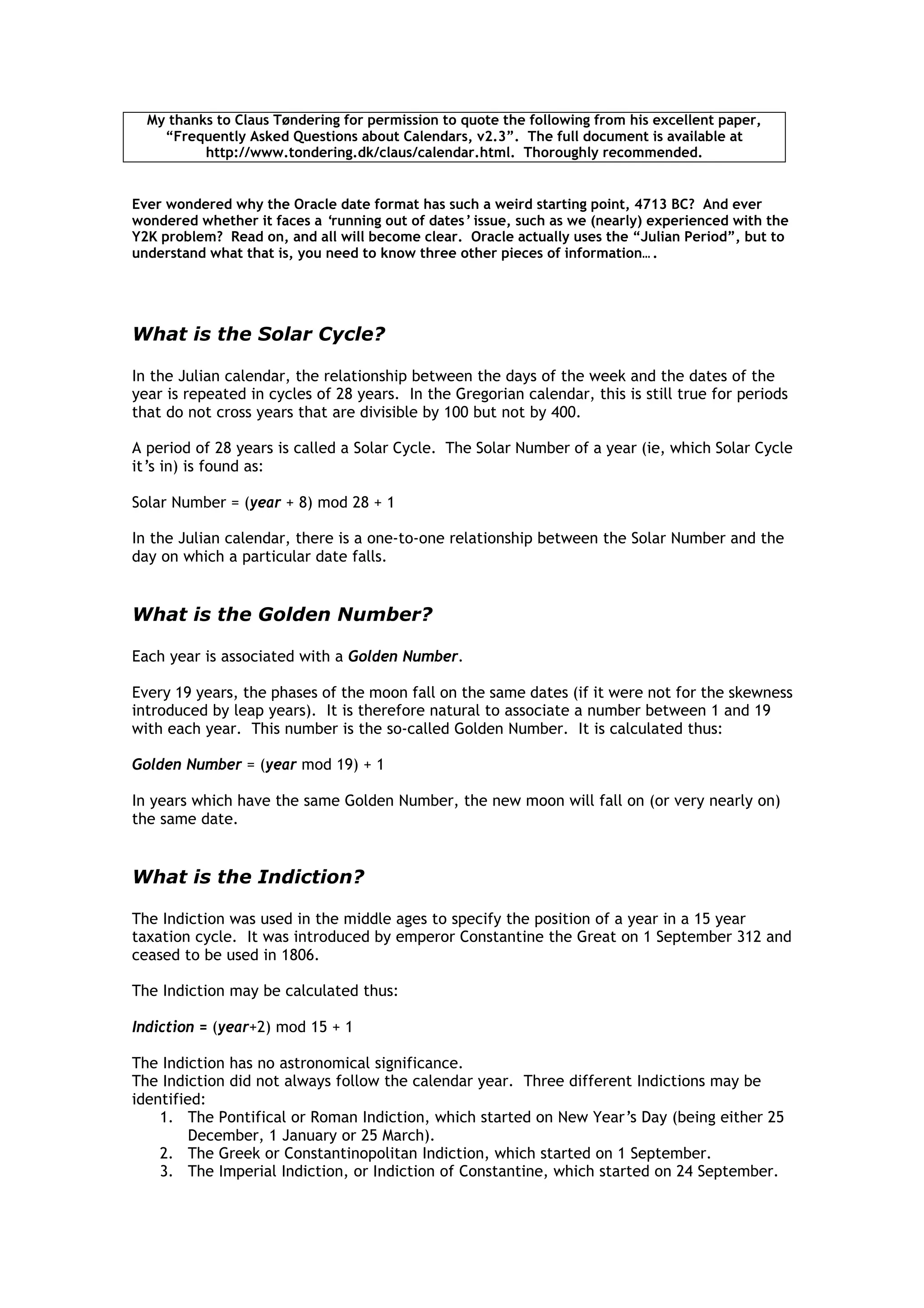The document discusses various calendar systems, focusing on the Oracle date format rooted in the Julian period, starting at 4713 BC, and its implications for date calculations. It explains key concepts like the solar cycle, golden number, and indiction, all of which are integral to understanding this format. The author emphasizes the importance of these historical frameworks for astronomy and database systems, highlighting potential future issues related to date functionality.

![What is the Julian Period
The Julian Period (and the Julian day number) must not be confused with the Julian calendar
(i.e., the calendar introduced in 45 BC by Julius Caesar).
The French scholar Joseph Justus Scaliger (1540-1609) was interested in assigning a positive
number to ever year without having to worry about BC and AD. He invented what is today
known as the Julian Period.
The Julian Period probably takes its name from the Julian Calendar, although it has been
claimed that it is named after Scaliger’s father, the Italian scholar Julius Caesar Scaliger
(1484-1558).
Scaliger’s Julian Period starts on 1 January 4713 BC and lasts for 7980 years. AD 2000 is thus
year 6713 in the Julian Period. After 7980 years, the number starts from 1 again.
Why 4713 BC, and why 7980 years? Well, in 4713 BC the Indiction, the Golden Number and
the Solar Number were all 1. The next time this happens is 15 x 19 x 28 = 7980 years later, in
AD 3268 [at which point Oracle databases with date fields will cease to function properly!!]
Astronomers [and RDBMS developers] have used the Julian period to assign a unique number to
every day since 1 January 4713 BC. This is the so-called Julian Day. JD 0 designates the 24
hours from noon UTC on 1 January 4713 BC to noon UTC on 2 January 4713 BC.
This means that at noon UTC on 1 January AD 2000, JD 2,451,545 started.
This can be calculated thus:
From 4713 BC to AD 2000 there are 6712 years.
In the Julian calendar, years have 365.25 days, so 6712 years corresponds to 6712 x 365.25 =
2,451,558 days. Subtract from this the 13 days that the Gregorian calendar is ahead of the
Julian calendar, and you get 2,451,545.
Often fractions of Julian day numbers are used, so that 1 January AD 2000 at 15:00 UTC is
referred to as JD 2,451,545.125.
Note that some people use the term “Julian day number” to refer to any numbering of days.
NASA, for example, uses the term to denote the number of days since 1 January of the
current year.](https://image.slidesharecdn.com/oracledates-110617144359-phpapp01/75/Oracledates-2-2048.jpg)